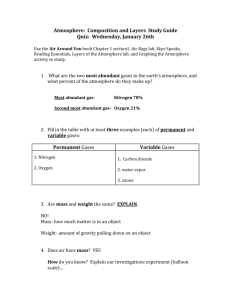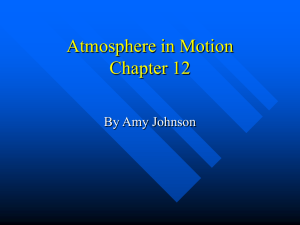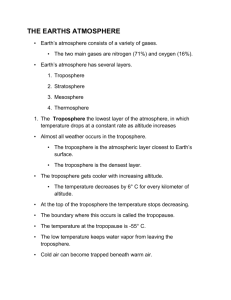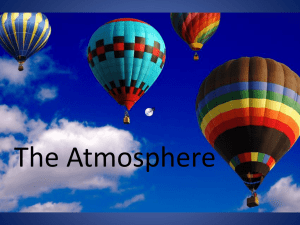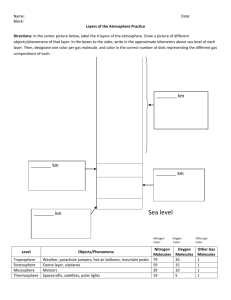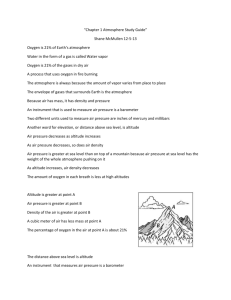Chapter 1 Composition of the Atmosphere The Earth and Its Atmosphere Permanent Gases
advertisement
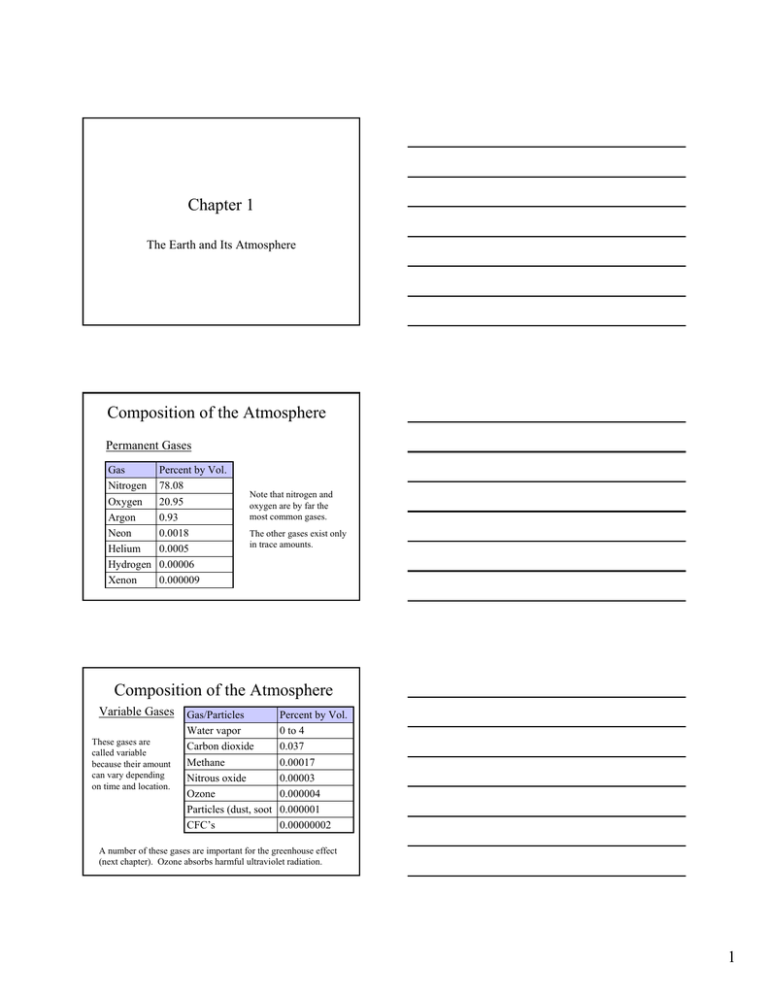
Chapter 1 The Earth and Its Atmosphere Composition of the Atmosphere Permanent Gases Gas Nitrogen Oxygen Argon Neon Helium Hydrogen Xenon Percent by Vol. 78.08 20.95 0.93 0.0018 0.0005 0.00006 0.000009 Note that nitrogen and oxygen are by far the most common gases. The other gases exist only in trace amounts. Composition of the Atmosphere Variable Gases These gases are called variable because their amount can vary depending on time and location. Gas/Particles Water vapor Carbon dioxide Methane Nitrous oxide Ozone Particles (dust, soot CFC’s Percent by Vol. 0 to 4 0.037 0.00017 0.00003 0.000004 0.000001 0.00000002 A number of these gases are important for the greenhouse effect (next chapter). Ozone absorbs harmful ultraviolet radiation. 1 Changes in Atmosphere with Altitude • Have you ever experienced any of the following? – Shortness of breath at high altitudes – Ears popping as you go up and down in airplanes • These are caused by the air becoming thinner or less dense as one goes up in altitude. Density and Pressure • The air thinning is described by the density of the air: density = mass/volume. • The reason your ears pop is the changing pressure = force/area. • Higher pressure means higher density and vice versa. • The pressure at sea level is 1013.25 millibar (mb) = 29.92 inches Hg. (Hg is mercury). What causes pressure? • Pressure is caused by the weight of the air above us. Although air is very light, there is lots of it above us. • As we go higher there is less air above us, and the pressure goes down, making the air less dense also. • At sea level the air pressure is the same one would have from a column of mercury 29.92 inches high or a column of water 33.77 feet tall. demonstration 2 Pressure vs. Altitude • At the summit of Mt. Everest (29,000 ft) the air pressure is ~300mb. • 30% of the air is above the summit and 70% is below. • 1000mb × 0.30 = 300mb Layers of the Atmosphere Thermosphere (>85km) Mesophere (50-85km) Stratosphere (11-50km): location maximum ozone Tropopause: location of the jet stream Troposphere (0-11km): weather we are familiar with Compositon of Layers • Homosphere – composition remains uniform (78% nitrogen, 21% oxygen). Below thermosphere. • Heterosphere – heavier atoms and molecules tend to settle. Thermosphere and above. 3 Ionosphere • Electrified region within the upper atomosphere. • Above ~60km. Most in the thermosphere. • Ionosphere reflects AM radio waves. At night layer D disappears and the radio waves go further. Key Topics Covered • Different gases which make of the atmosphere. • Variation of pressure and density with altitude. • Layers of the atmosphere. 4

